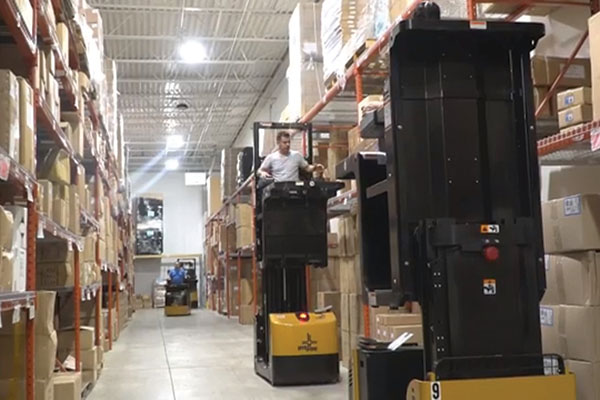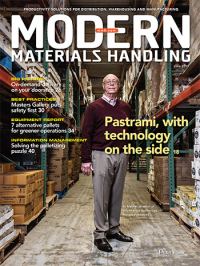New orderpickers help distributor handle rapid growth
Low-level orderpickers eliminate the risk of ladders and the battery issues of the previous equipment supplier.
PDQ/ERP in St. Charles, Ill., is one of the nation’s largest suppliers of appliance parts, and completes more than 3,000 picks to fill more than 400 orders per day. Having already moved from a smaller location in nearby Batavia, Ill., the company’s continued growth forced it to maximize warehouse storage by storing up to 12 feet high while planning for further expansion into the space next door. The company had already phased out rolling ladders in favor of a powered alternative for order picking, but operations manager Oscar Davila soon discovered limitations with his equipment.
“They battery-powered vehicles made it a lot easier to pick orders, but it wasn’t strong enough and it didn’t go high enough,” Davila says. He went to ProMat hoping to find an access vehicle that would safely reach his top tier of stock. After in-house testing, Davila selected new low-level orderpickers (Big Joe).
“I liked that it was steadier and beefier. It could also go higher than the previous vehicles, and to me that was our solution to be more efficient and safe,” Davila says. “We liked it so much we bought two and then a year later I bought two more and then the following year another two. That’s what my budget allowed me. Early this year I bought two, and now I’m in the market for four more.”
New mid-level orderpickers fill storage positions and lower stock in the aisles. Their ease of use and maneuverability has freed standard forklifts to support the loading dock.
“The drivers love them because they feel safer and they can do more work in one lift,” Davila says. “You can feel it when you’re up high and you have to move from one position to the other without coming down. These feel more secure and don’t wobble.”
The new vehicles complete two times as much work as ladders, carry twice the load weight of the previous vehicles, and elevate operators as high as 192 inches. After considering the positive impacts on operations, Davila reorganized his equipment positioning strategies.
“We have aisles with fast-moving items, and that’s where we have the new vehicles,” he explains. “The tendency is that we’ll pick more quantity and weight out of these aisles, so the new vehicles are ideal. For the slow-moving items, that’s where we now have the old powered vehicles.”
Davila notes longer run time and better battery life, and says he hasn’t had any issues with batteries in three years.
“My operating costs have gone down,” Davila says. “I have fewer pickers, but I have more packers because a few pickers are able to keep more packers busy.

Article Topics
Inventory & Picking News & Resources
Leaders Q & A with Bryan Ferguson: Resurgence of RFID technology Parcel handling on the move An inside look at picking technologies Manhattan Associates selects TeamViewer as partner for warehouse vision picking Consultant and industry leader John M. Hill passes on at age 86 Siemens, Universal Robots, and Zivid partner to unveil smart robotic picking solution AI-based inventory monitoring solution provider Gather AI raises $17 million More Inventory & PickingLatest in Materials Handling
ALAN opens nominations for 2024 Humanitarian Logistics Awards Kenco to install an AutoStore system at its Jeffersonville, Ind., DC Schneider Electric rolling out WMS and TMS solutions from Manhattan Associates at scale Leaders Q & A with Bryan Ferguson: Resurgence of RFID technology Tom Panzarella appointed Chief Technology Officer at Seegrid Mallard Manufacturing joins the MacLean-Fogg family of companies Boscov’s: Speed regained in retail distribution More Materials HandlingAbout the Author
Subscribe to Materials Handling Magazine

Find out what the world's most innovative companies are doing to improve productivity in their plants and distribution centers.
Start your FREE subscription today.
May 2024 Modern Materials Handling

Latest Resources












